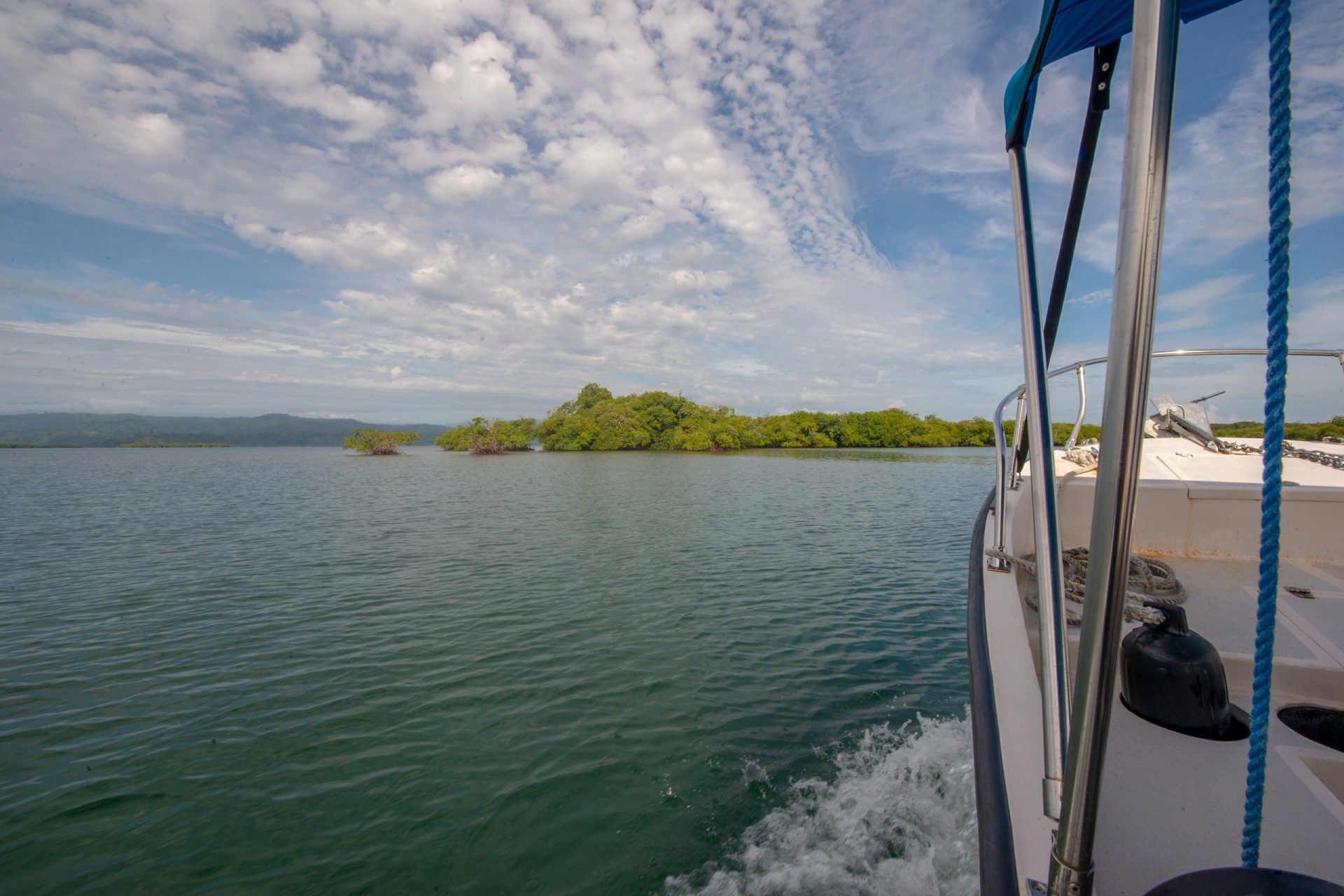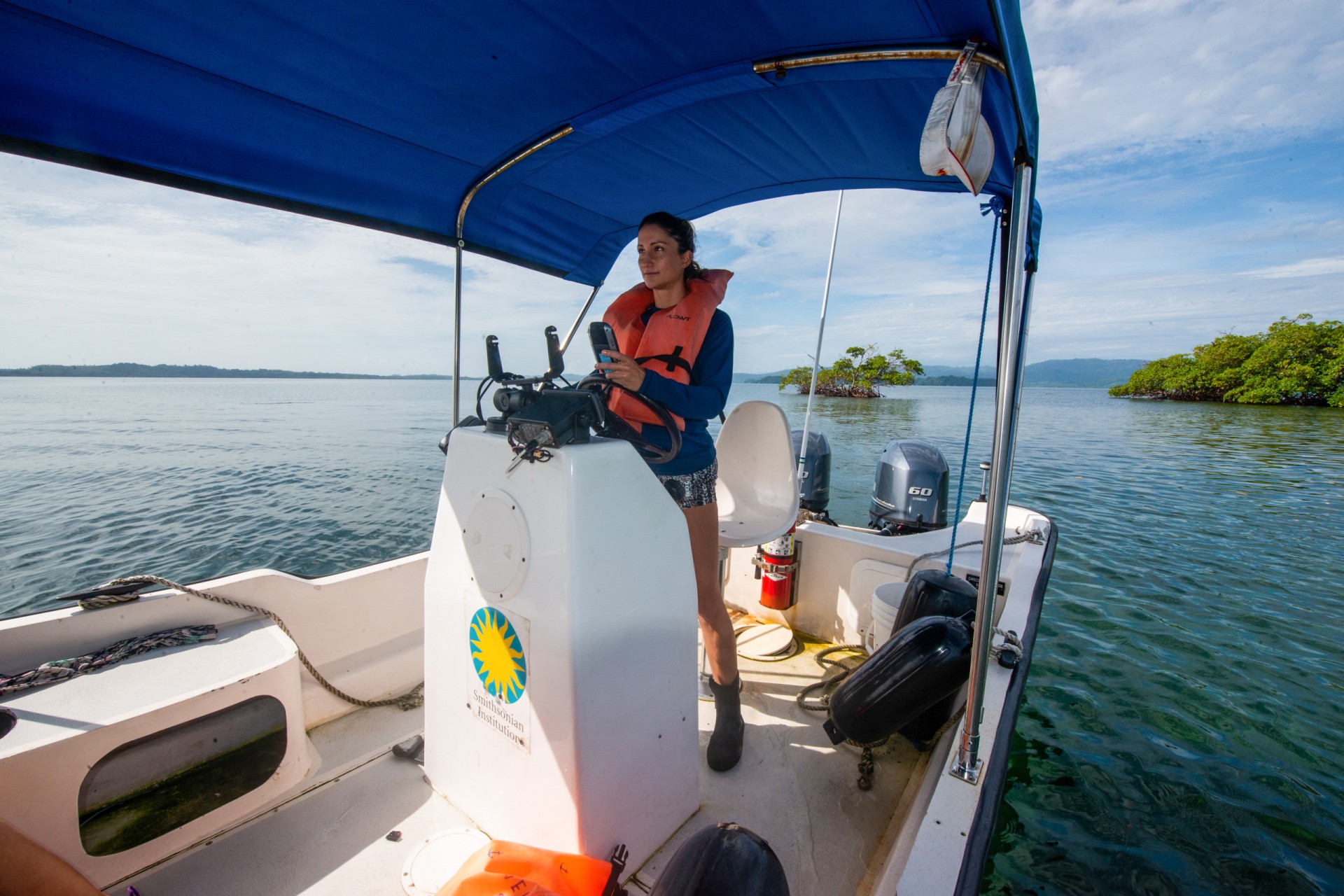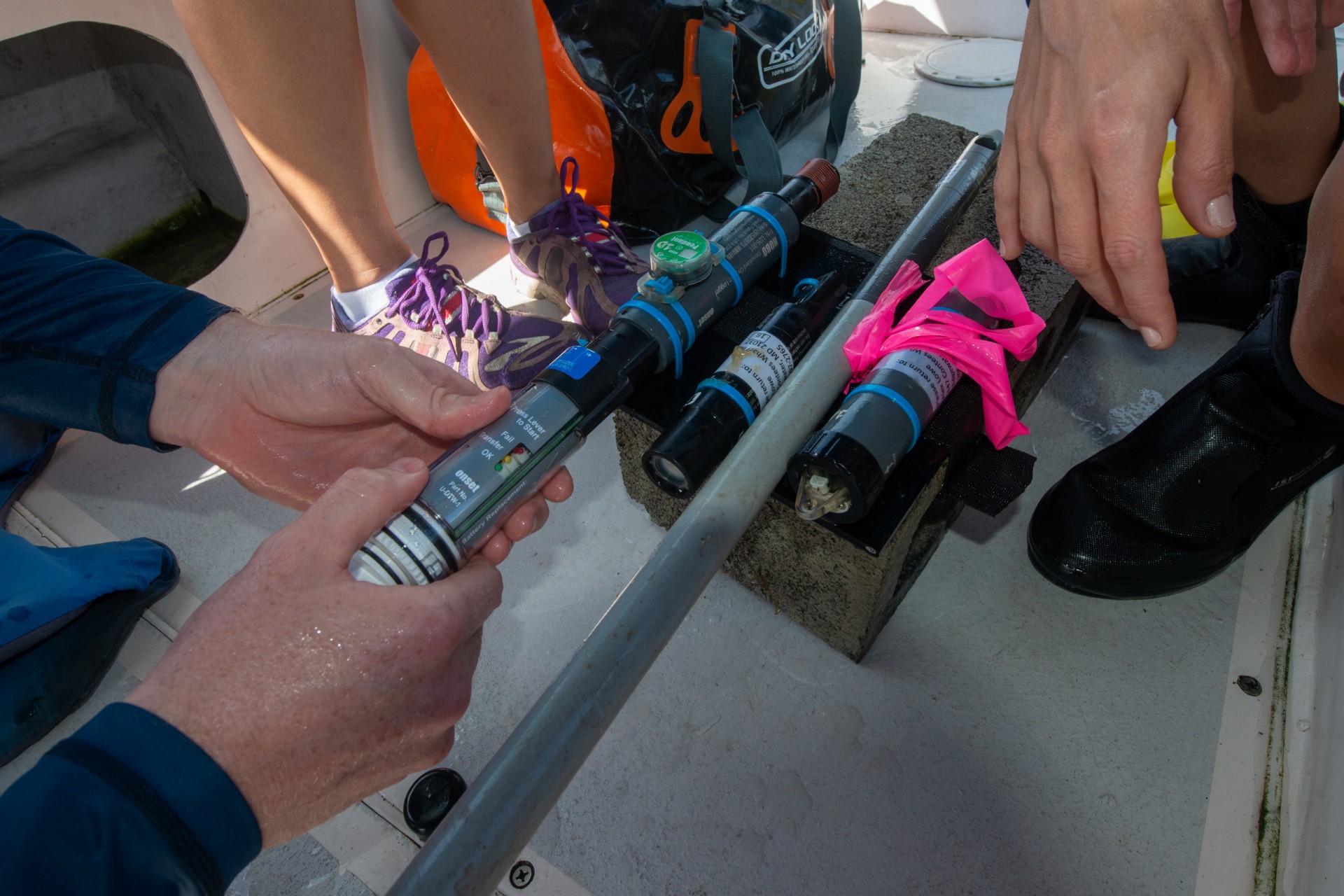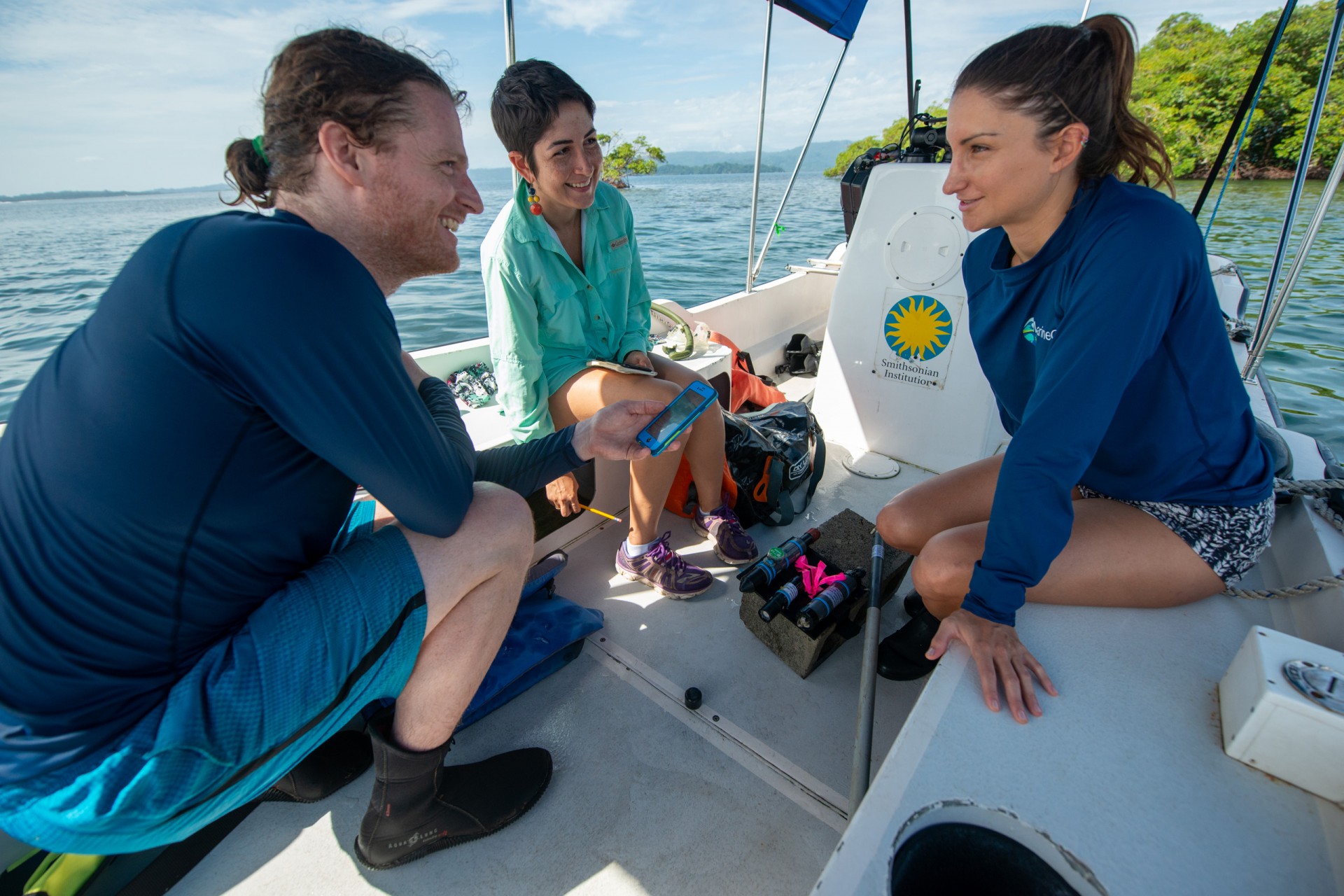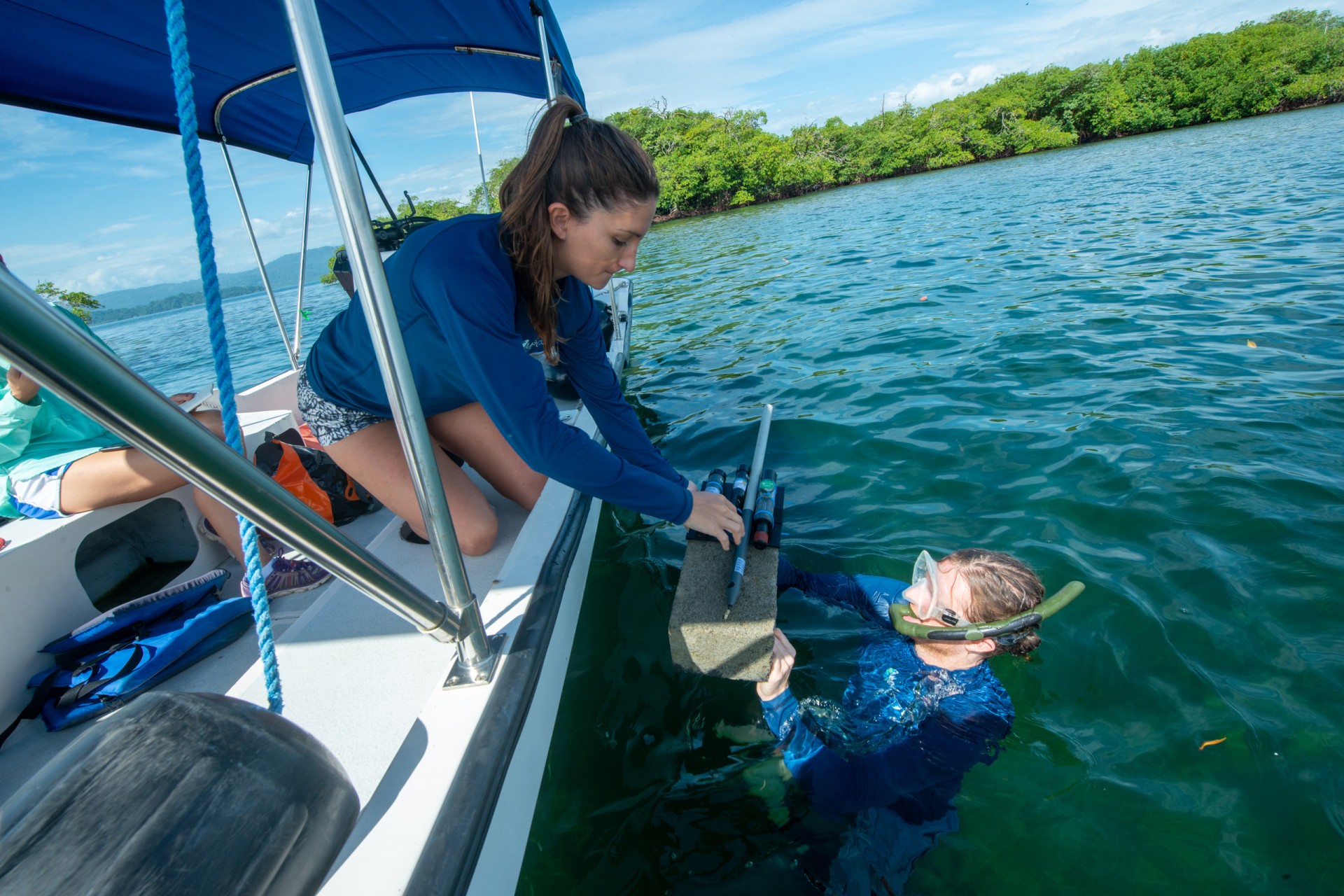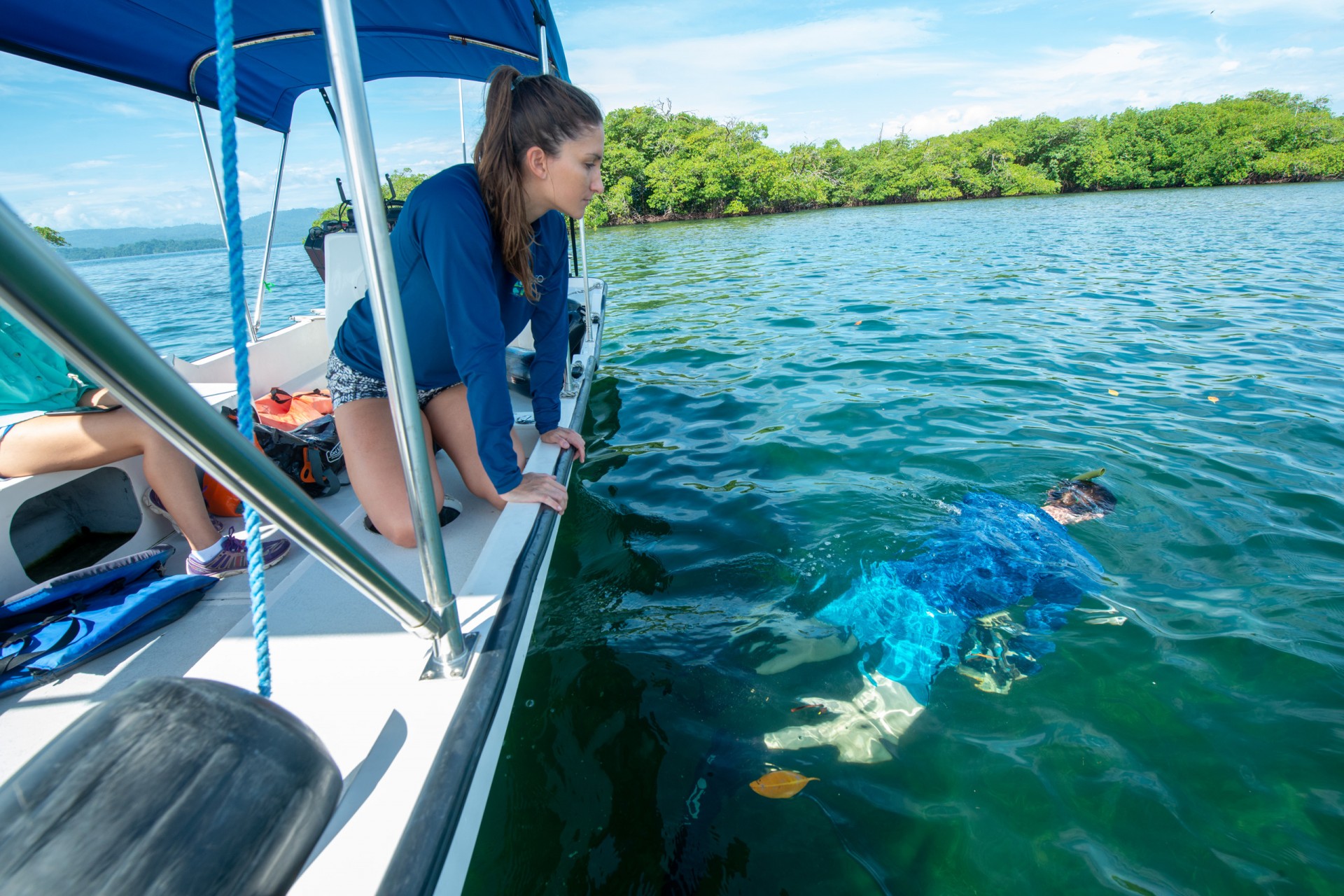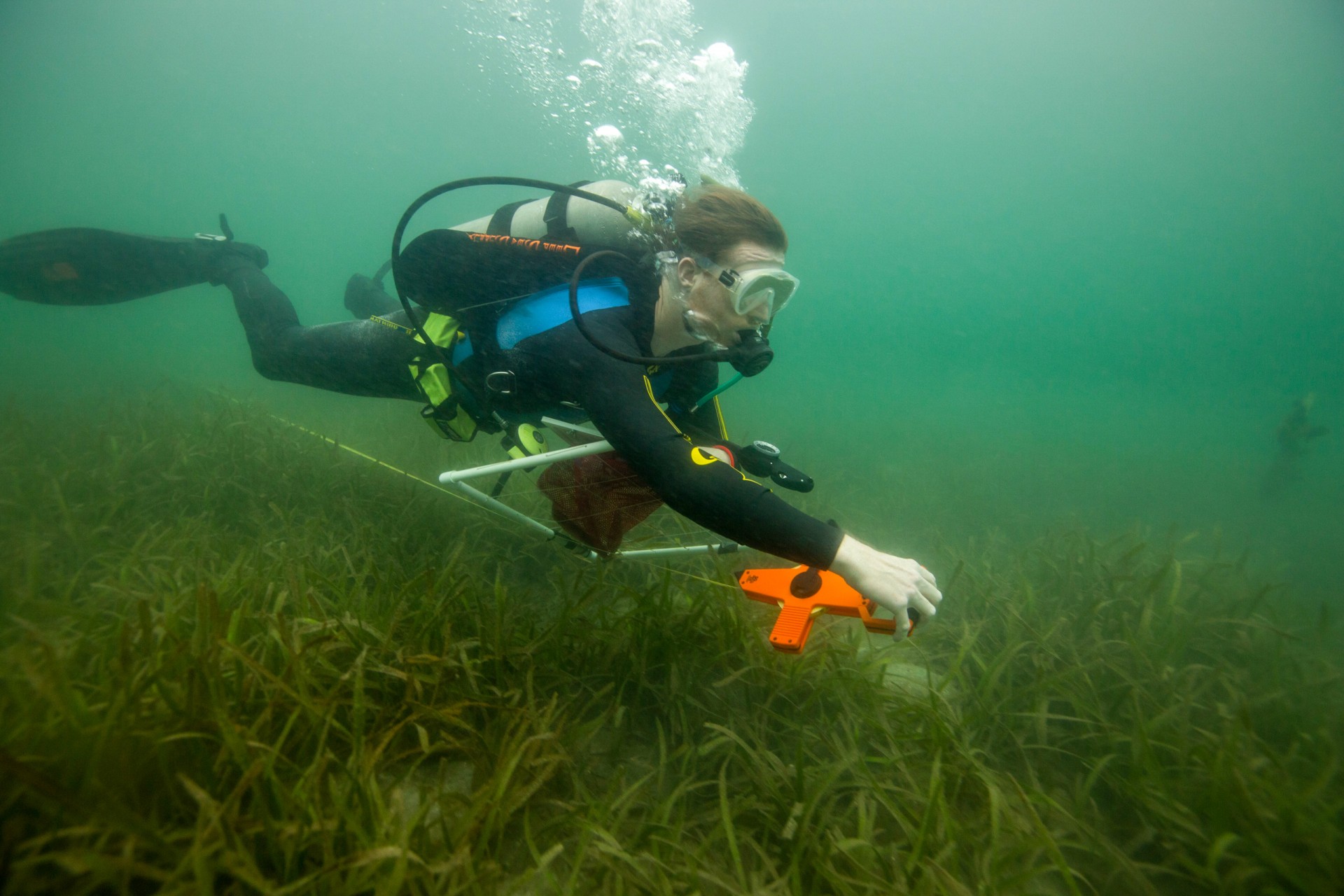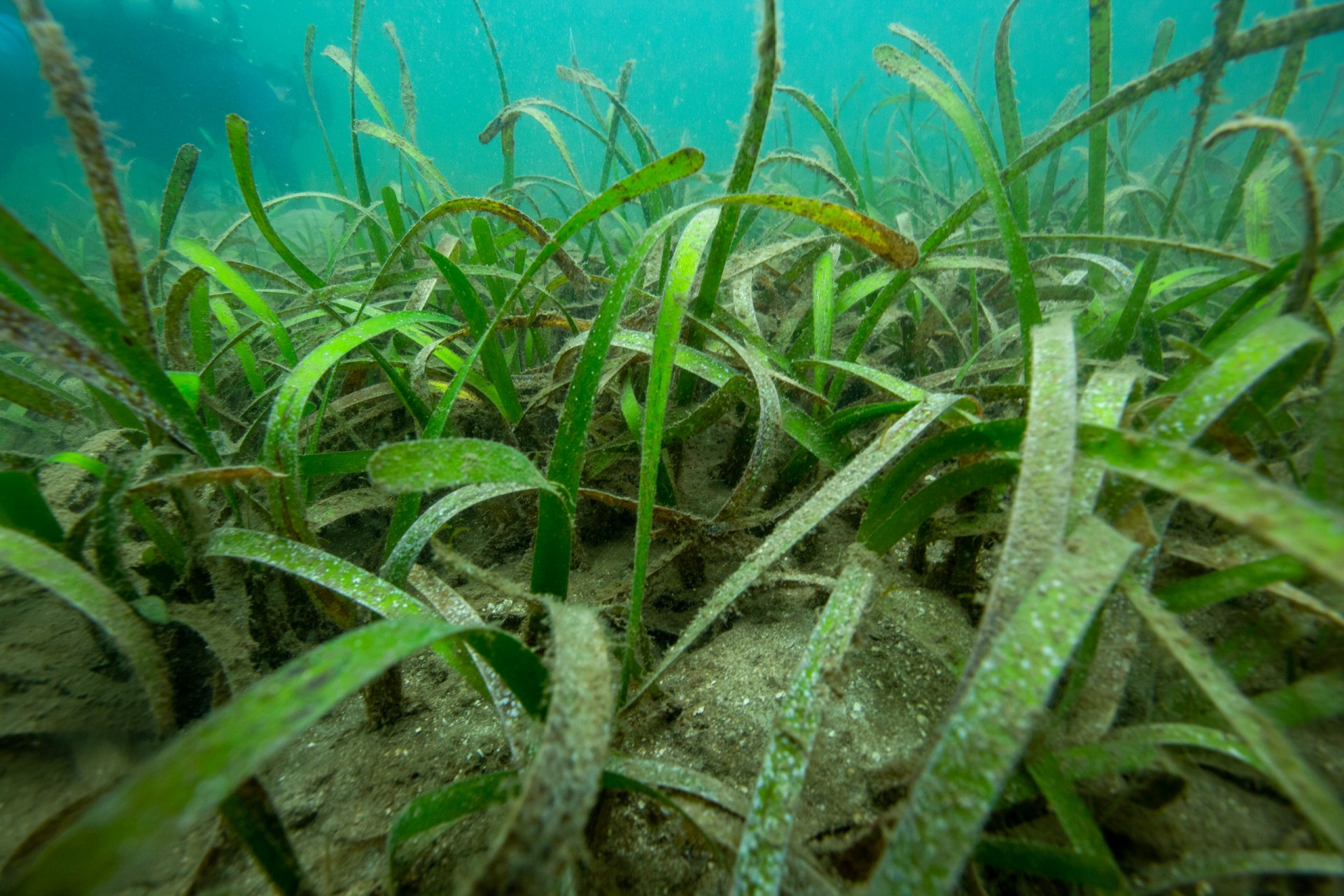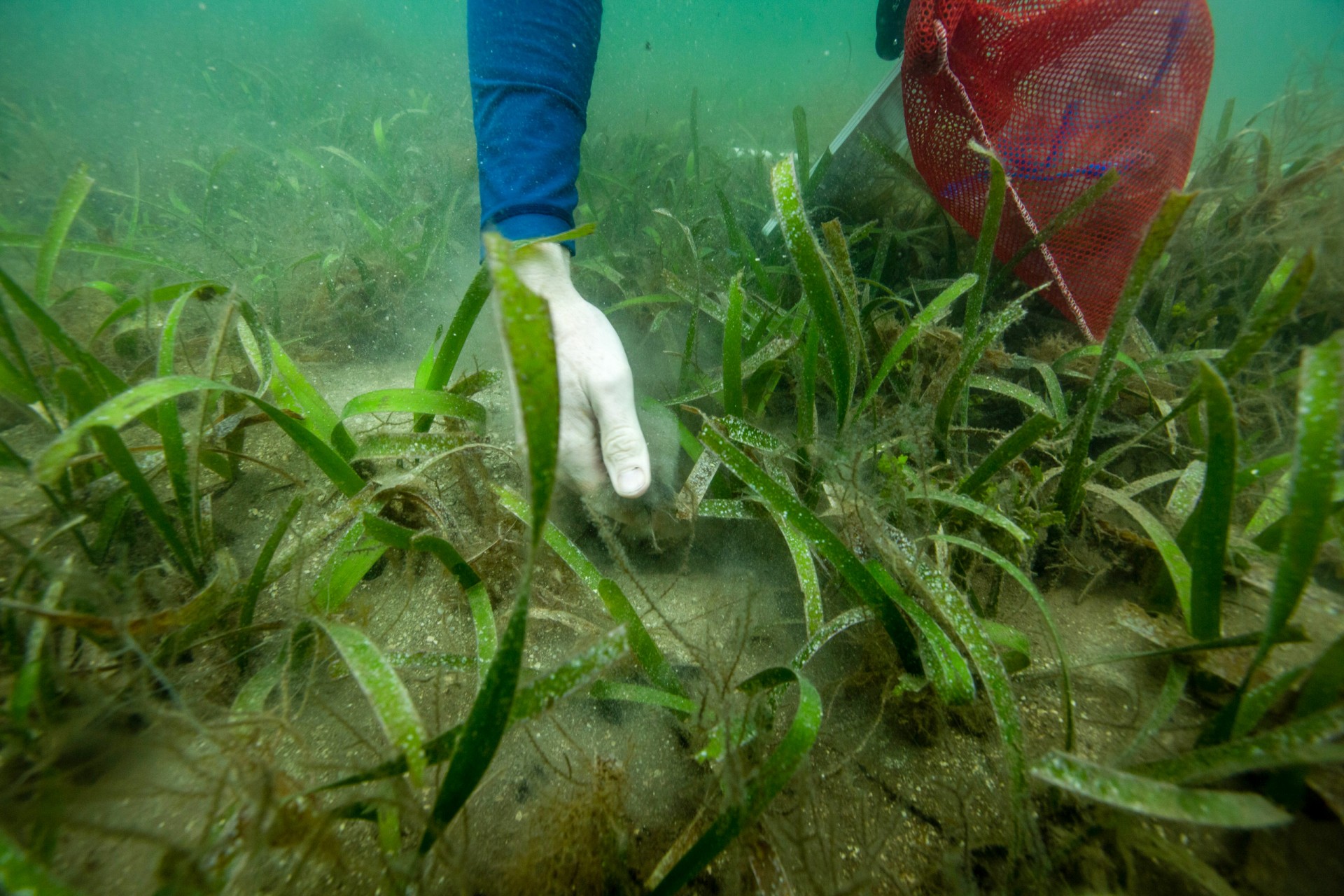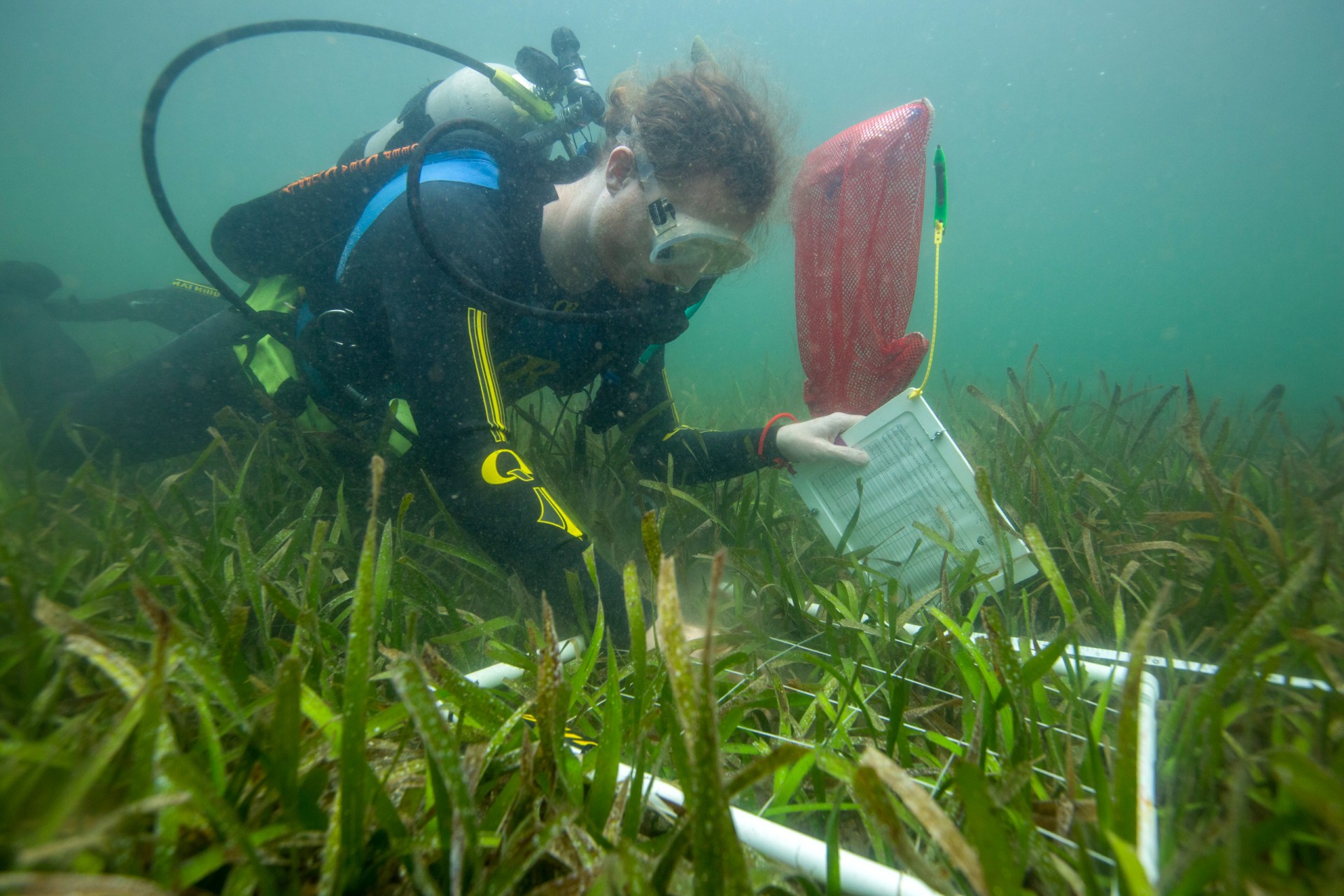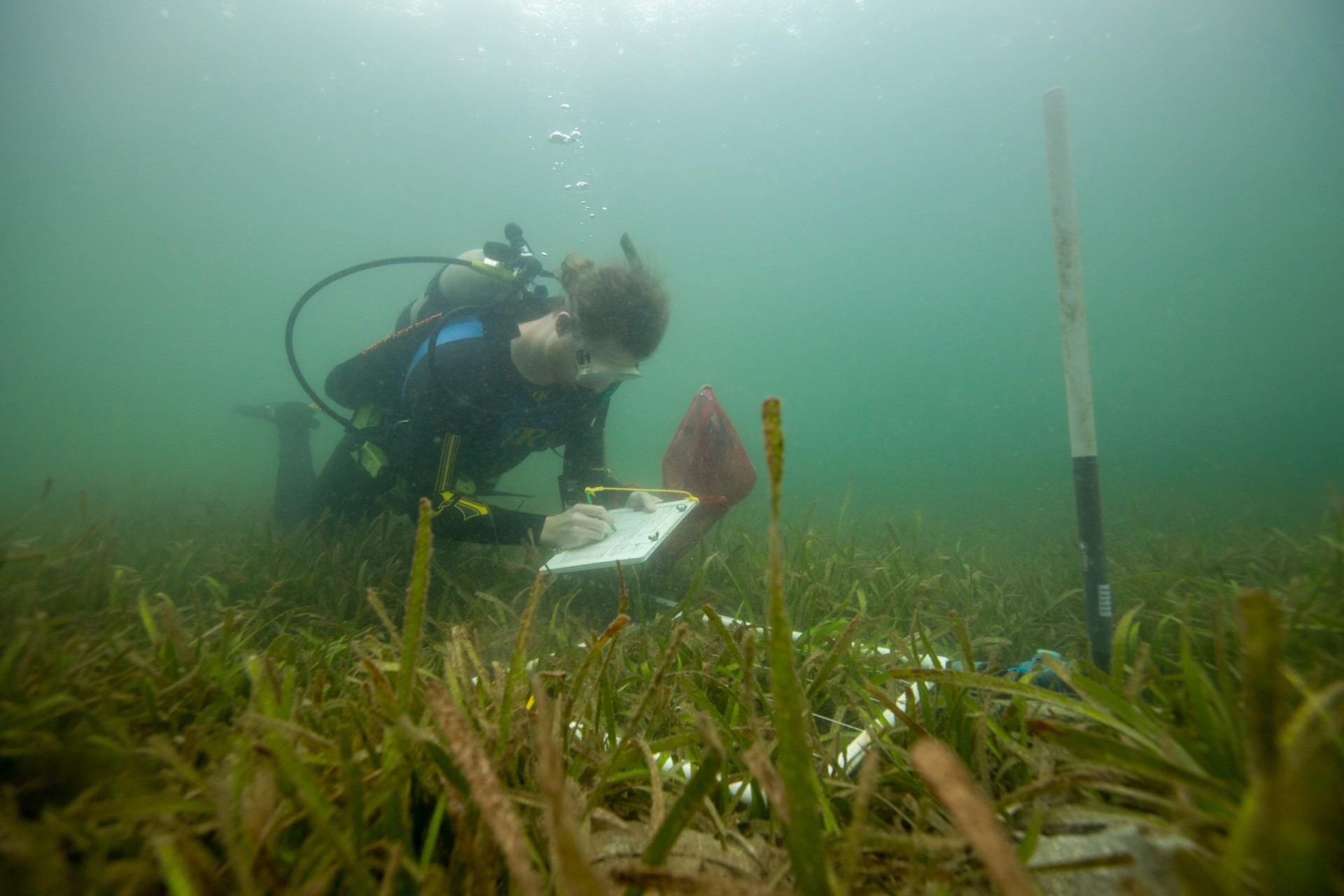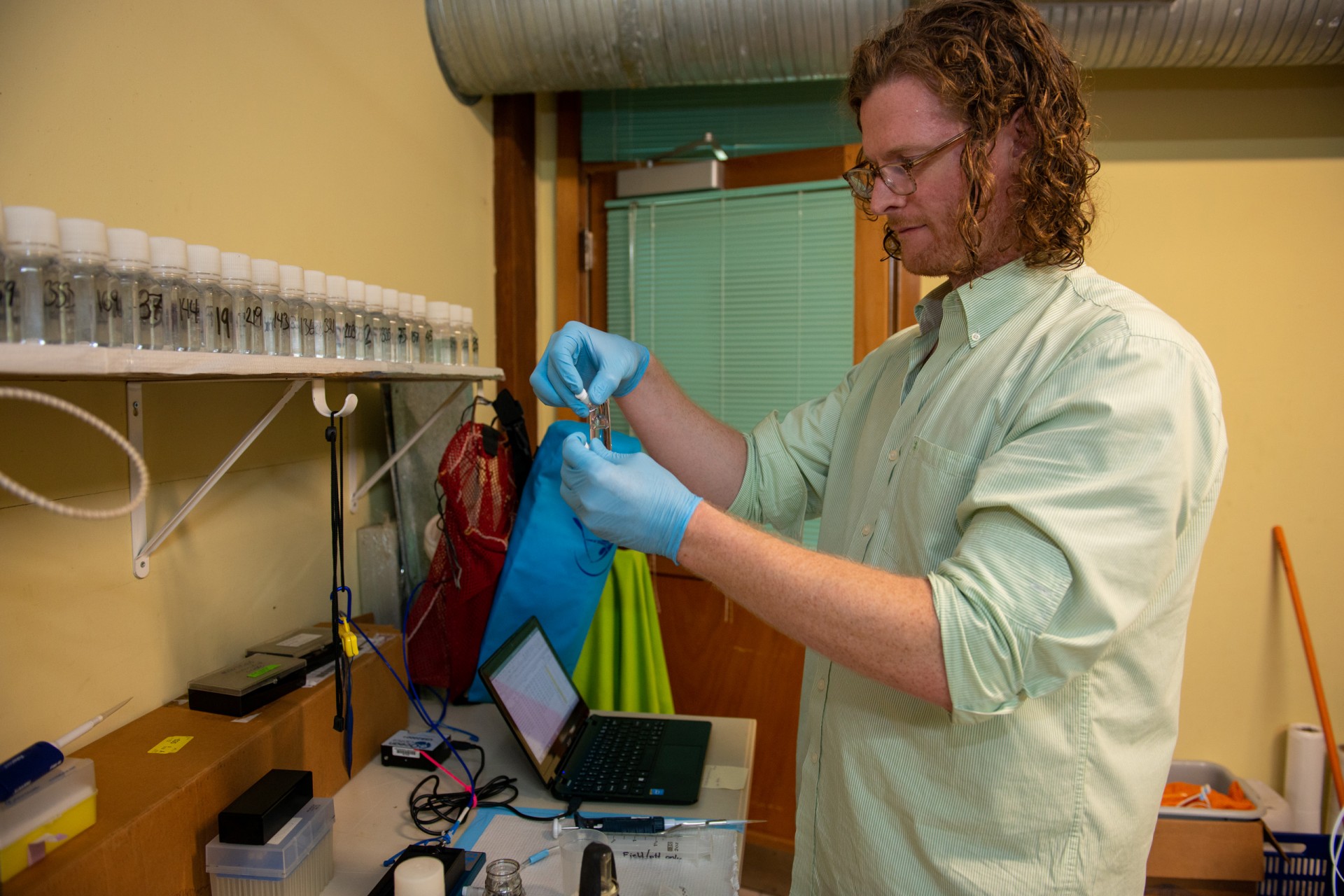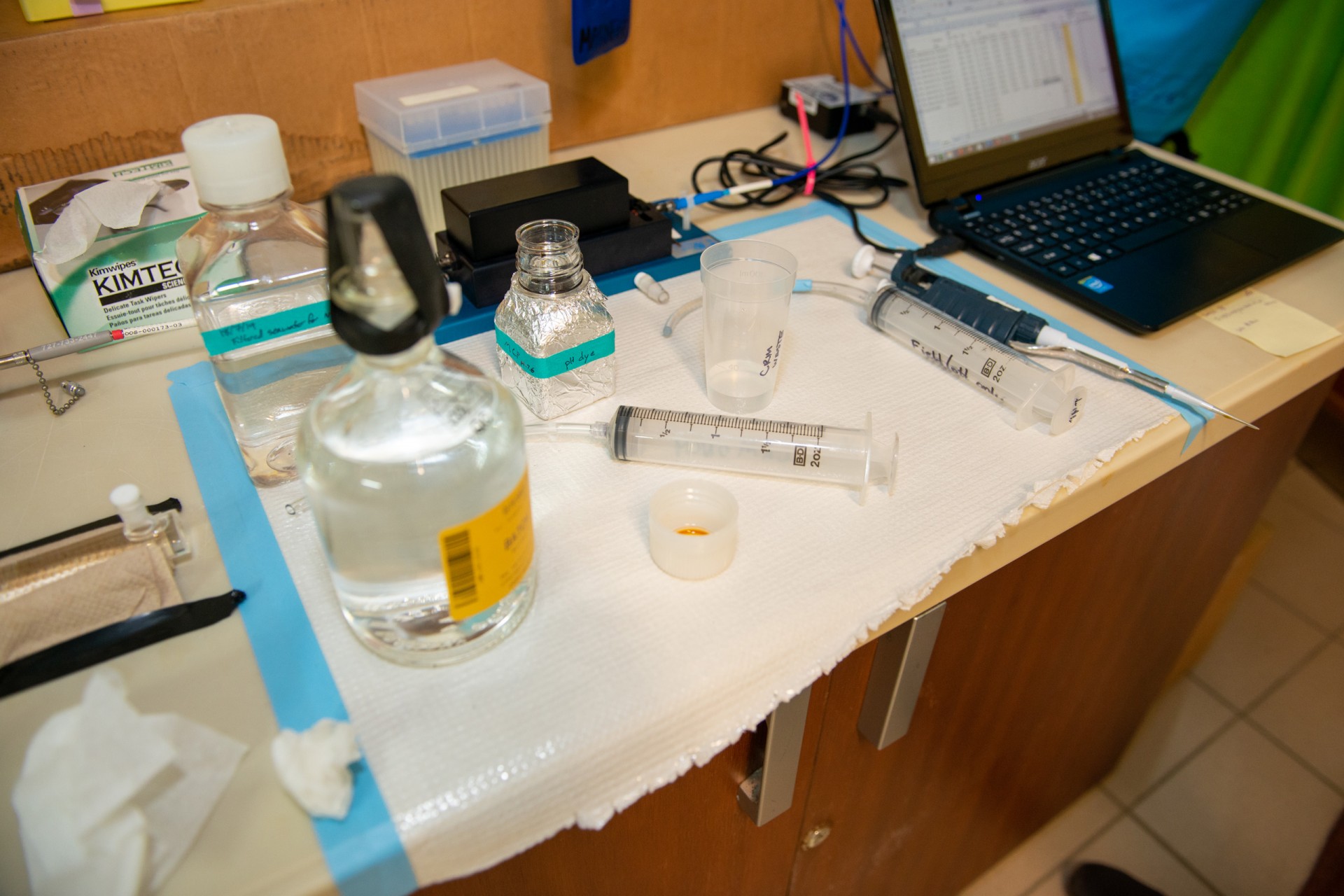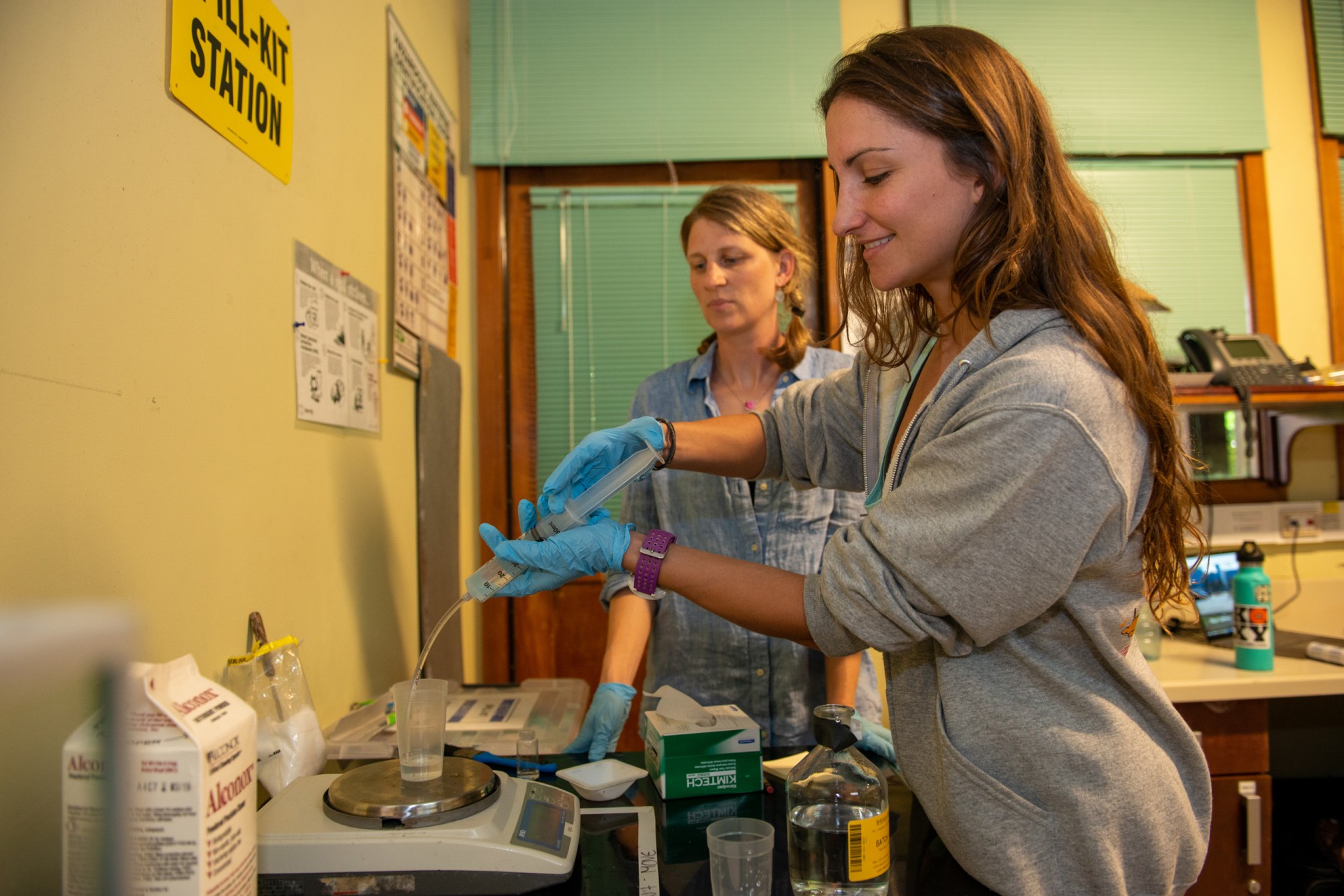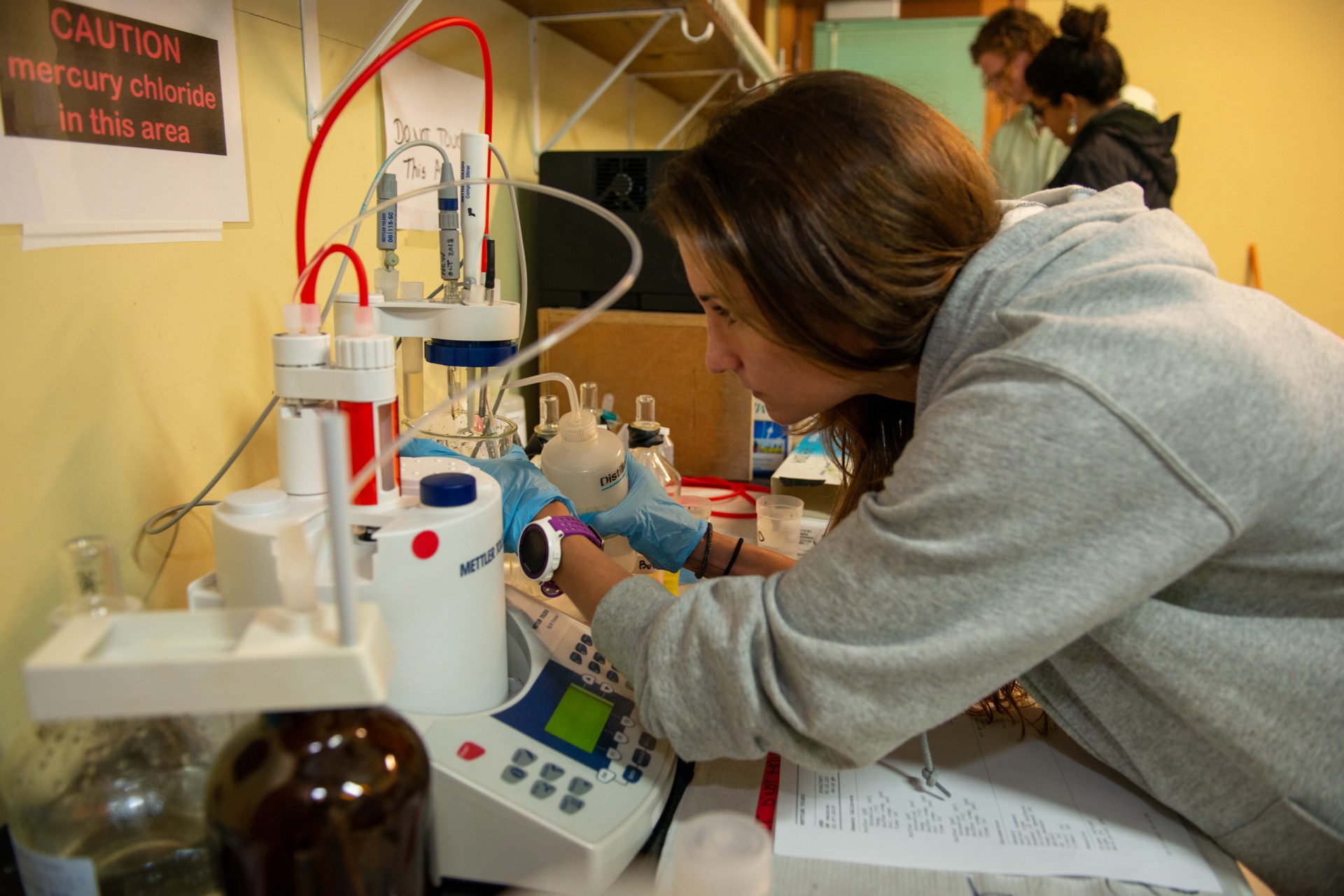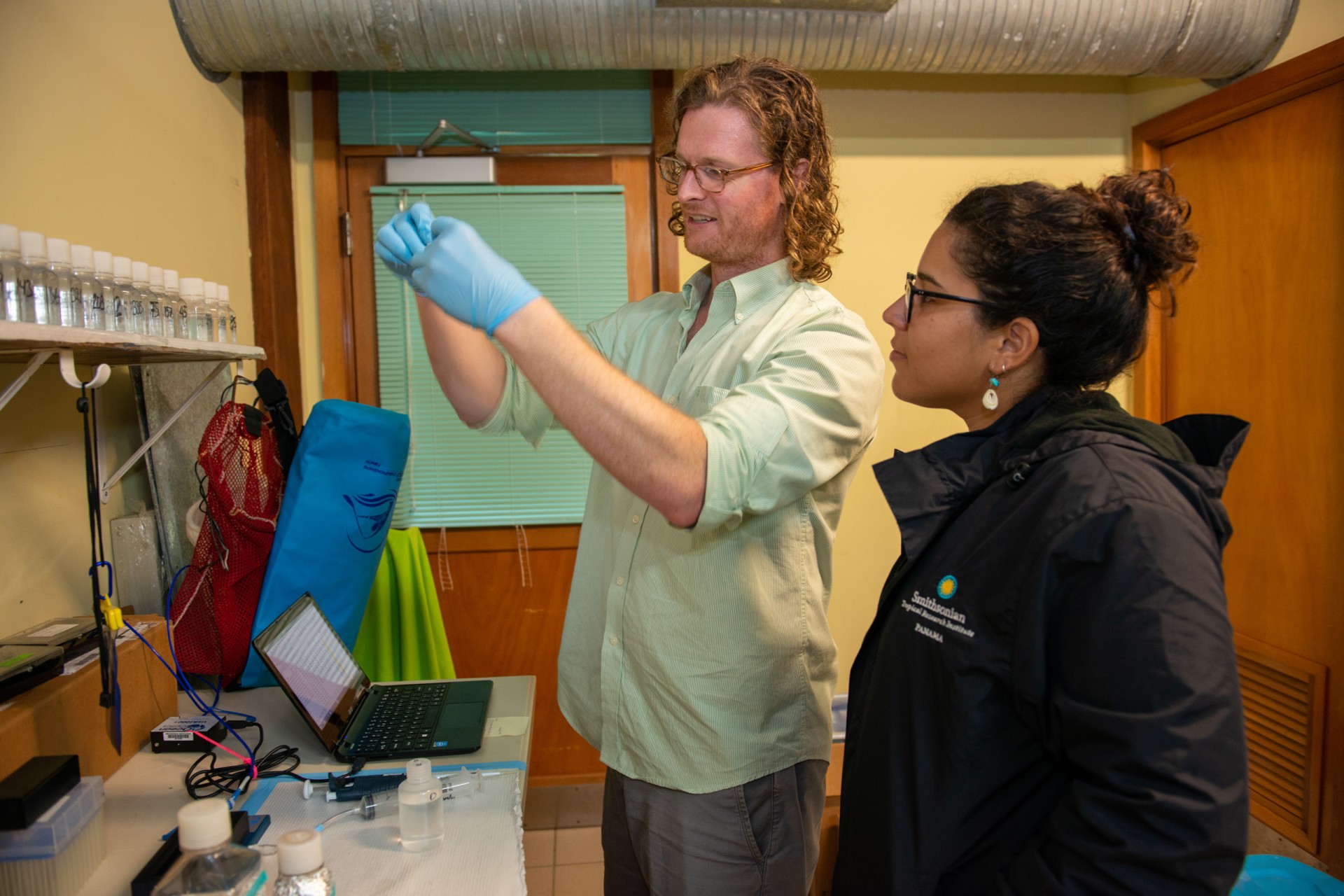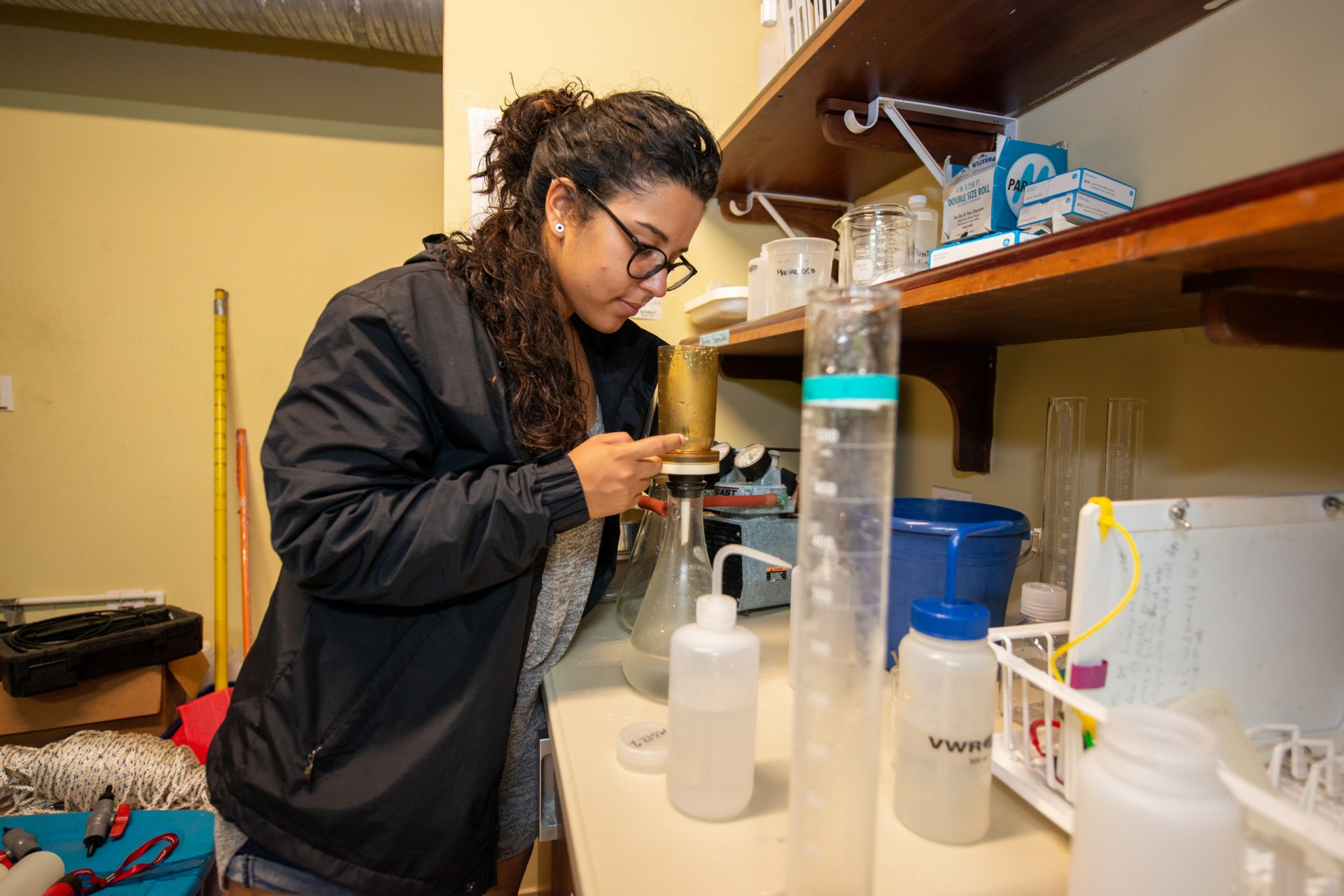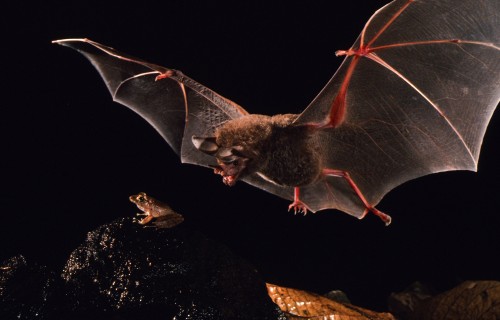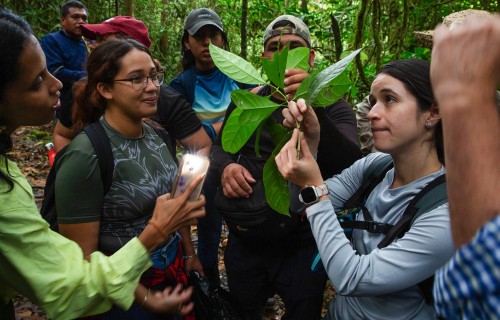Leafcutter ants have blind
spots, just like truck drivers
Fluctuations
Constant change drives
local ecosystems
Bocas del Toro
Text by Leila Nilipour
Photos by Jorge Alemán
A MarineGEO project with sites in Panama aims to understand the influence of coastal biology on the highly variable oceanic pH levels of near-shore ecosystems
Alex Lowe jumps into the warm, shallow waters near a mangrove forest in Bocas del Toro. It is a sunny morning in July, and the MarineGEO postdoctoral fellow is in Panama for two weeks. He is at the Smithsonian Tropical Research Institute’s research station in the Caribbean setting up data loggers across several seagrass sites, and training the Panamanian MarineGEO technicians that will assist him with data collection.
With this project, he aims to understand how much these underwater plants are influencing pH levels in coastal areas, a measurement of acidification in the oceans. Attached to a cinder block, on the ocean floor, the loggers are keeping track of pH on an hourly, daily and weekly basis. They are also measuring oxygen, temperature, salinity, and the amount of light and water currents in the area.
Ocean acidification has marine scientists concerned. About 25% of the carbon dioxide that humans send into the atmosphere is absorbed by the ocean. Since the industrial revolution, this has produced a drop in pH from 8.2 to 8.1 in the open ocean, or about a 30 percent increase in acidity. If the current rates of carbon dioxide emissions continue, seawater pH may drop to 7.8 or 7.7 by the end of the century, becoming more acidic than anything experienced in the past 20 million years, according to the Smithsonian Ocean Portal.
In coastal environments, however, these pH fluctuations are faster and much more dramatic. From day to night, it can range from 8.3 to 7.8. When the sun is out, photosynthesizing seagrass removes carbon dioxide and releases oxygen, increasing the pH. At night, the seagrass respires, creating the opposite effect.
“People often talk about seagrass as an ocean acidification refuge, based on the fact that they photosynthesize a lot and take up plenty of carbon, but they also respire a lot,” Lowe explains.
By measuring the oxygen on an hourly scale, as well as the pH, he expects to establish a connection between the biological processes and the pH changes occurring in coastal areas. If the main driver of pH change were biological carbon dioxide, rather than atmospheric, he would notice an equal fluctuation in oxygen levels, in the opposite direction.
At the end of the morning, Lowe finishes placing five sensors in different seagrass sites near the STRI station. They all have varying seagrass densities. This will allow him to observe whether pH and oxygen levels change in relation to the amount of seagrass present.
This data gathered in Panama will be compared to the measurements being done in other seagrass sites of the MarineGEO network, such as the Texas gulf coast, Florida, Virginia and Washington State.
“I thought ocean acidification was the global driver changing local ecosystems, but it is the opposite. Direct human impacts that alter coastal habitats can have dramatic effects on local pH change over time, with feedbacks on the plants and animals that live there”, says Lowe. “Plus, coastal places are really productive areas and we never knew that carbon dioxide varied as much as it does. As an ecologist, it is an exciting new frontier”.
By advancing our understanding of local pH fluctuations in relation to coastal biology, and integrating this knowledge to what we already know about human impacts on the dynamics of near-shore ecosystems, Lowe’s project may allow for more focused interventions aimed at addressing local-scale challenges.

